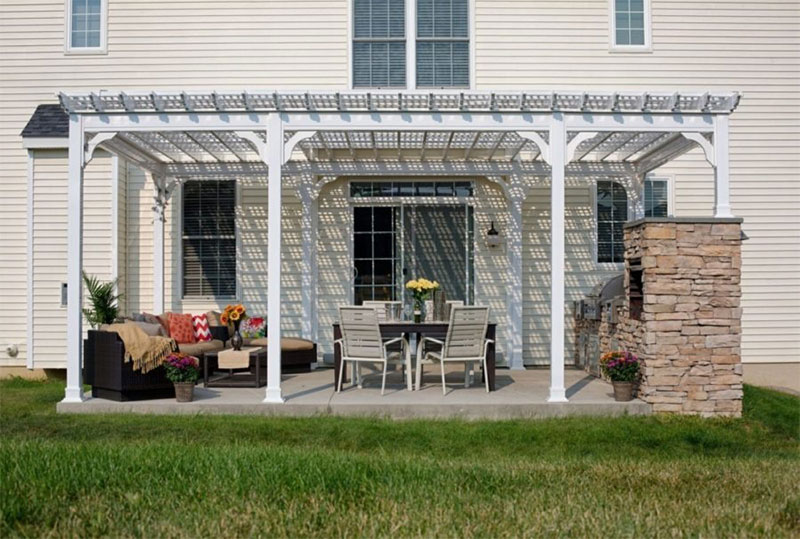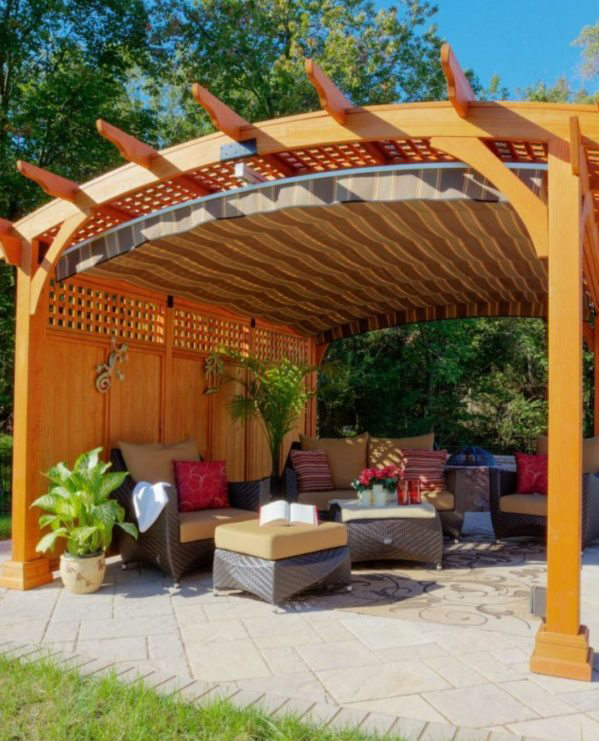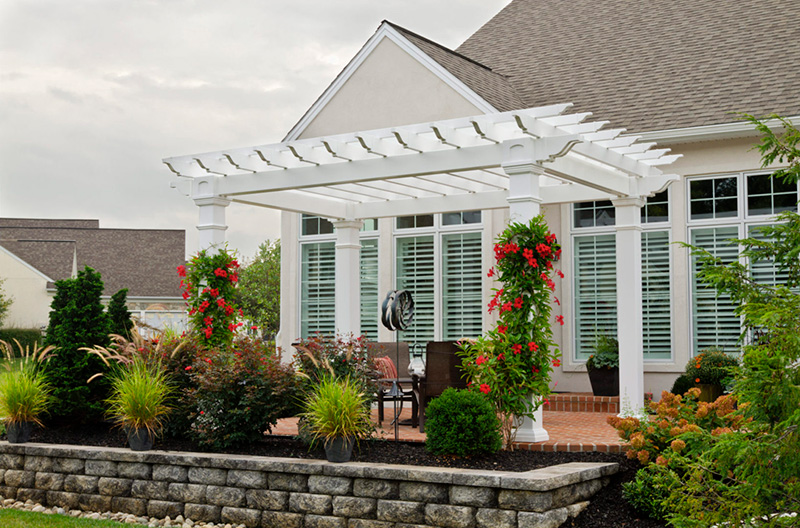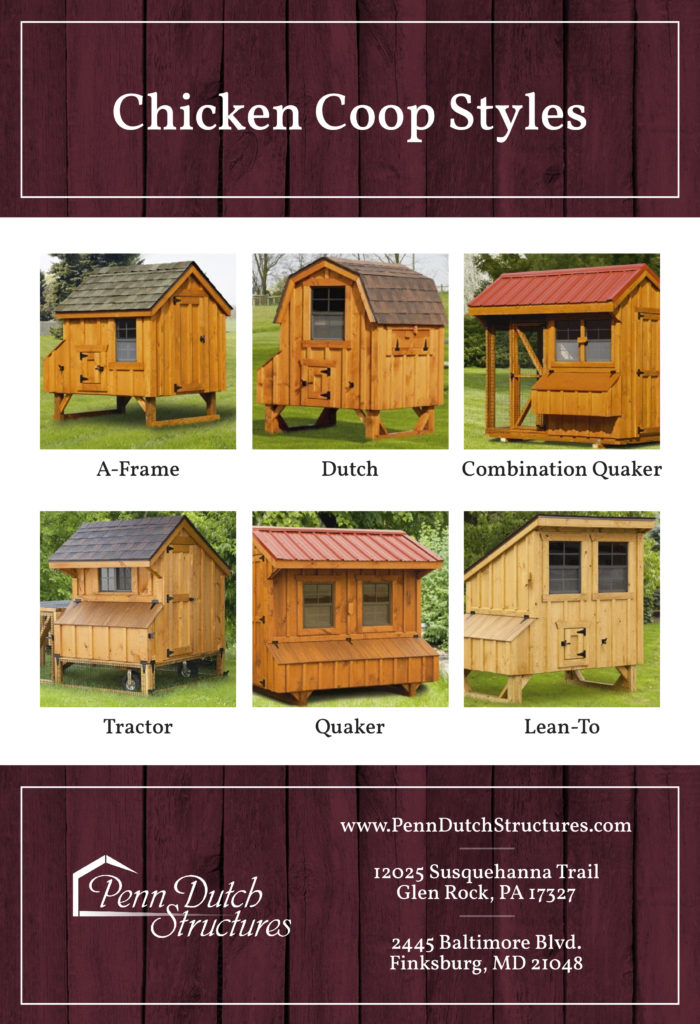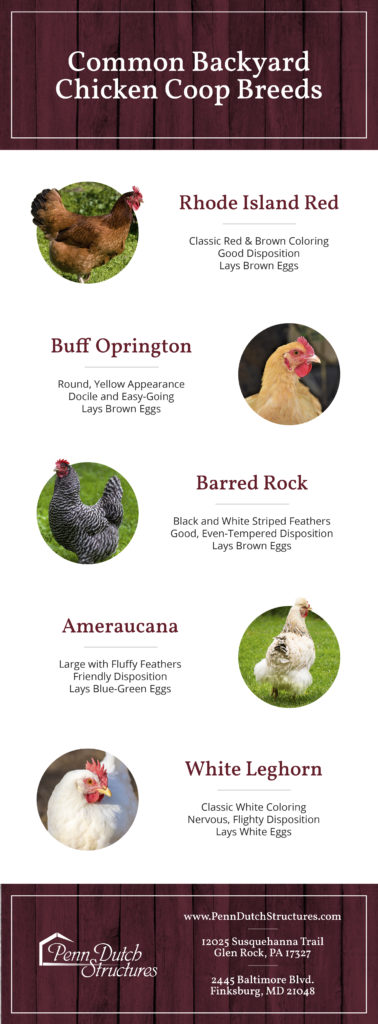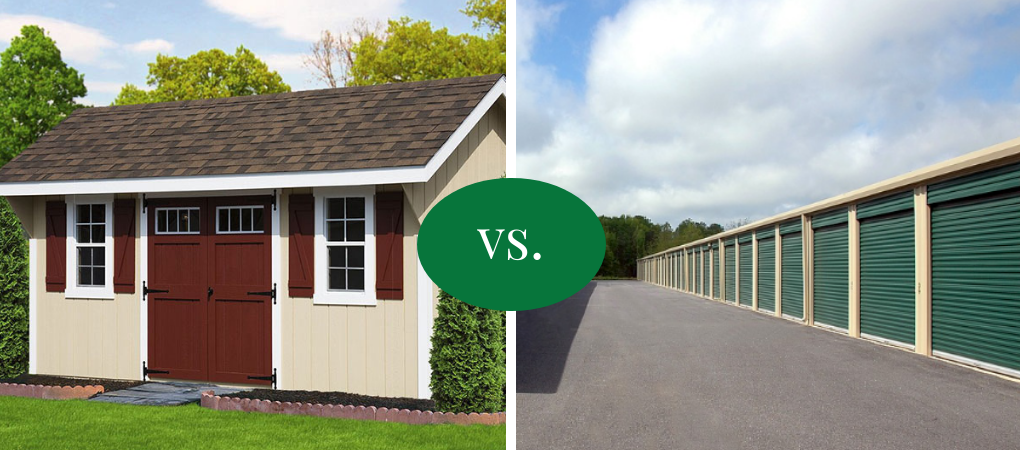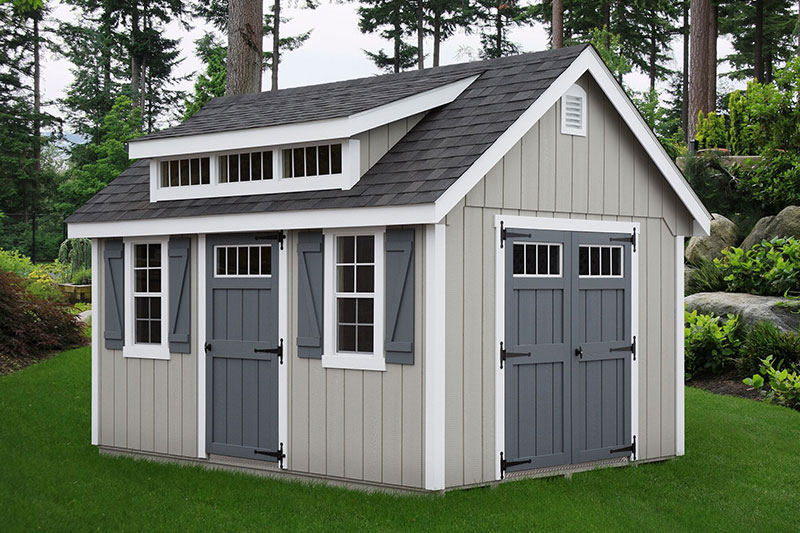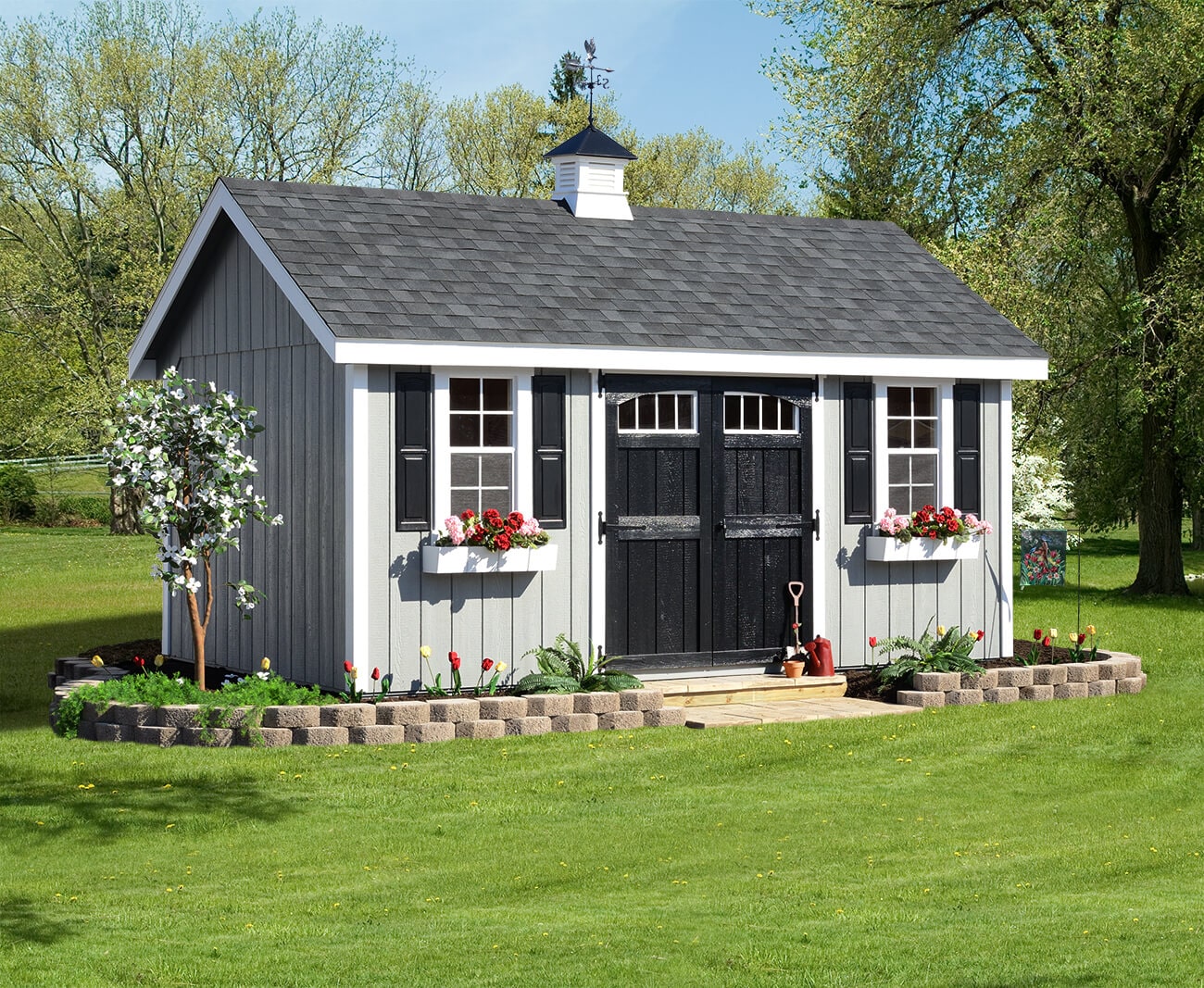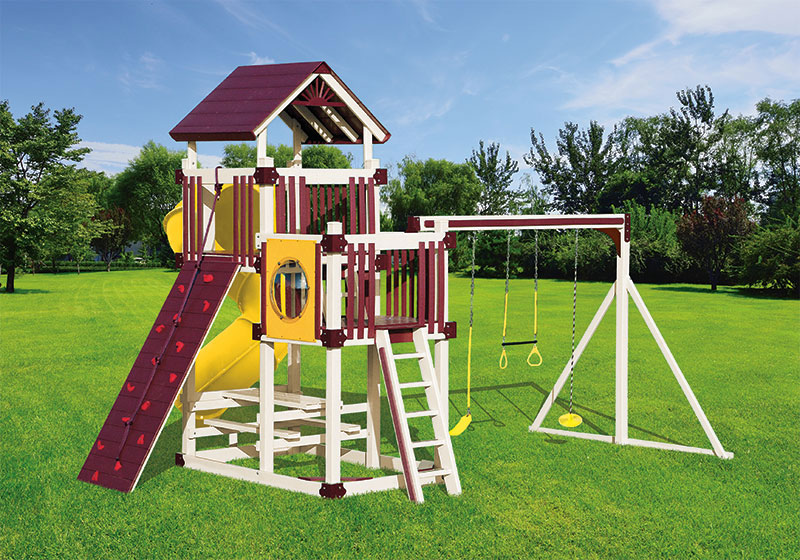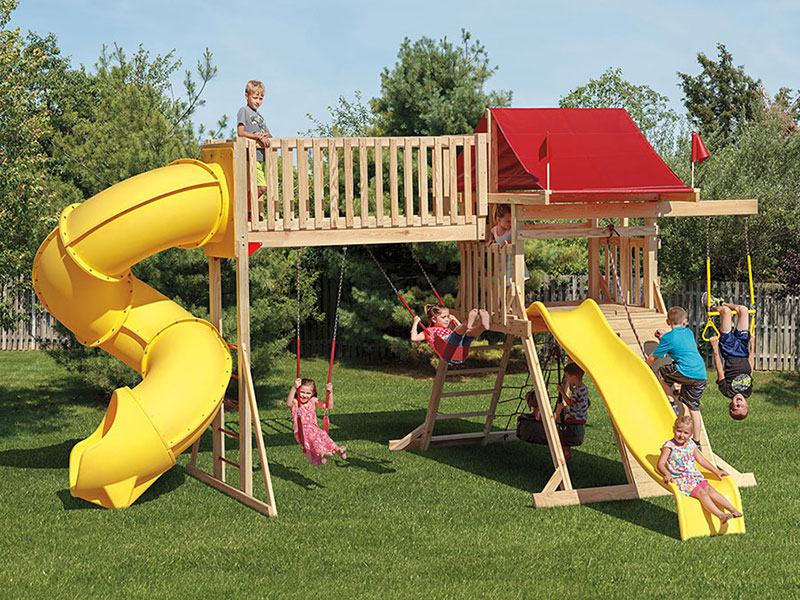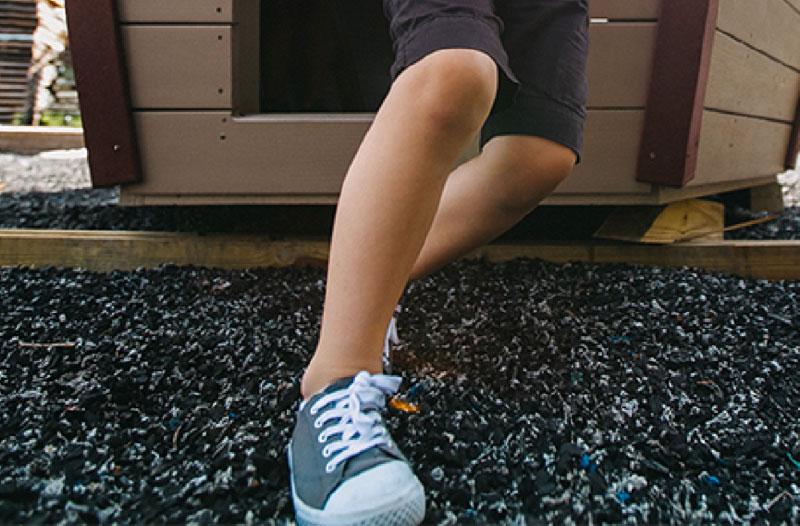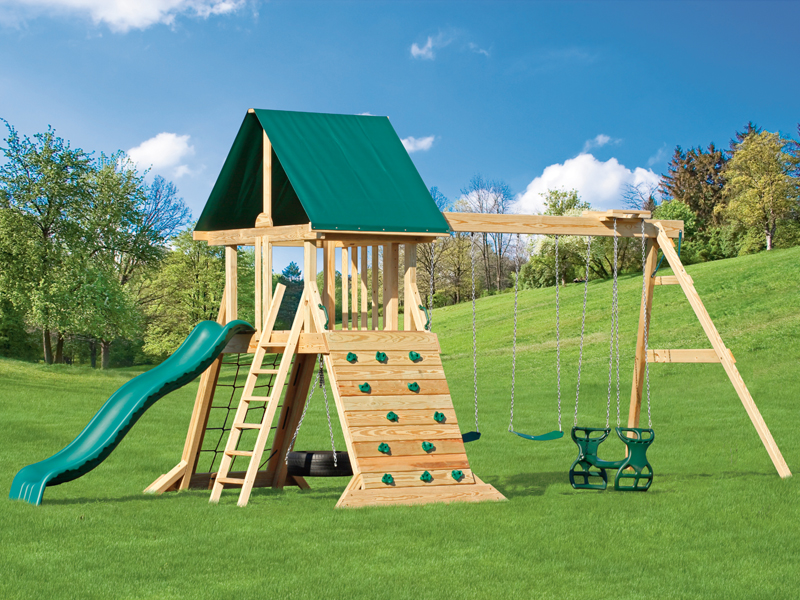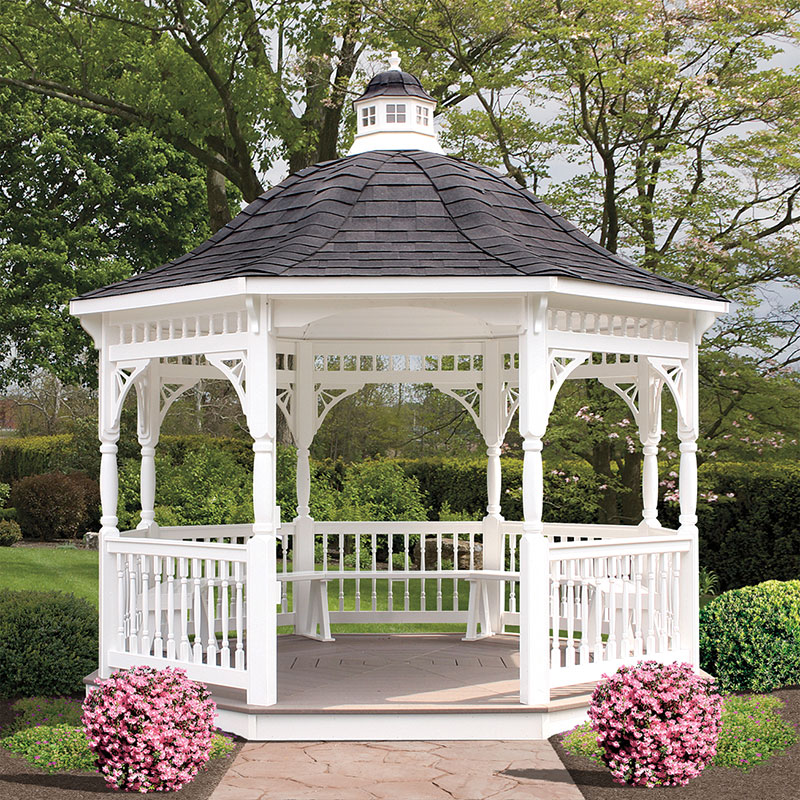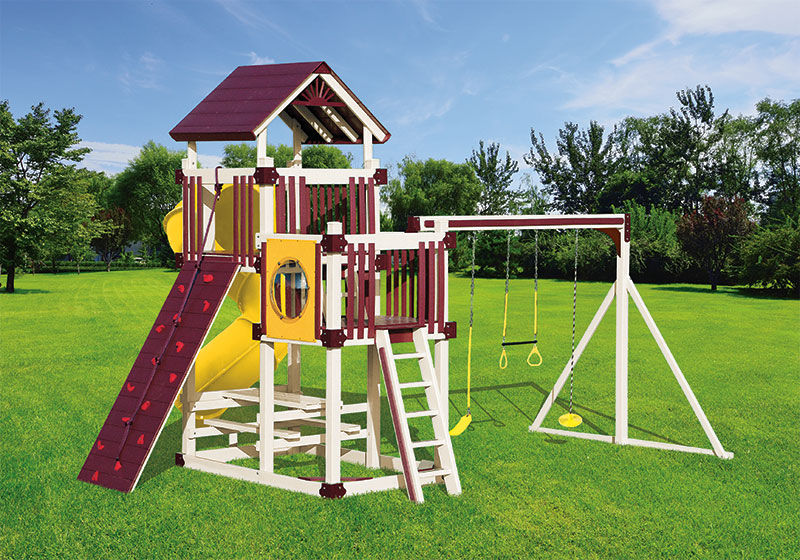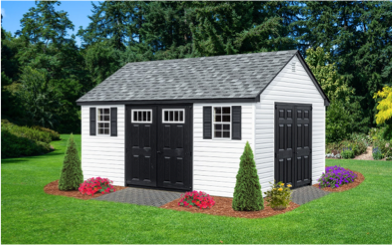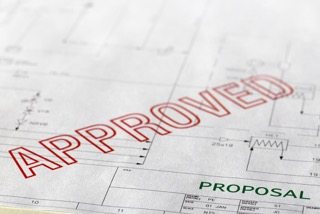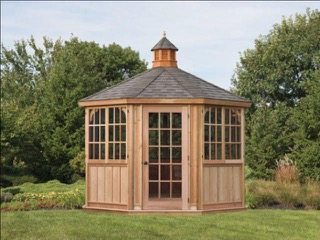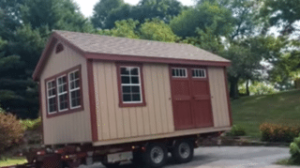Swing sets bring hours of backyard entertainment for your family, but may also bear visits to urgent care if accidents occur. Sixty-seven percent of playground injuries involve falls from equipment. These falls may result in fractures, concussions, or lacerations. You can eliminate potential accidents by having a safe “fall zone” under your swing set. Check out some of the most frequently asked questions about rubber mulch safety.
Instead of installing your swing set right onto your grassy lot, the Consumer Product Safety Commission recommends the following process for adding a base surface to create a safe play space:
- Start with the original surface (hard packed earth)
- Add 3- to 6-inch base layer of loose-fill gravel (for drainage)
- Cover with a Geotextile cloth
- Finish with a loose-fill protective layer (rubber mulch, wood mulch, sand)
There are a lot of ground cover options for your backyard play set. We offer rubber mulch as a base surface for all of the swing sets we sell. Many people don’t understand the benefits of choosing rubber mulch as ground cover. However, there are a number of disadvantages when using wood mulch, grass, and other options. We hear many questions about rubber mulch safety and we’re sharing the answers below.
Is rubber mulch safe?
Federal agencies including the U.S. Consumer Product Safety Commission and the U.S. Testing Company, as well as independent and accredited testing firms, have conducted many studies measuring the shock-absorption of numerous surfaces in relation to falling objects. Consistently, rubber mulch has proven to be the most shock-absorbent standard safety surface.
Before installing a rubber mulch base, our experts recommend clearing the ground completely of rocks, debris, and stumps. We also suggest completely removing any old surfacing material. When left on the ground, old materials may continue to rot or attract insects. Old surface materials may also reduce the shock-absorption level of rubber mulch as they make their way to the surface and mix with the rubber chips.
In addition, rubber mulch:
- is cleaner, reducing the dirt, mud, and insects in your backyard
- never rots or decomposes
- is 99.9% steel-free
- is non-toxic, non-abrasive, and non-staining
Is rubber mulch cost-effective?
In the long run, rubber mulch will save you money over other base surfaces. Although the initial investment may be slightly more costly, rubber mulch won’t need to be replaced for a lifetime.
Unlike wood mulch chips or sand which need to be replaced on a regular basis, strong winds and rain will not disturb or strip away rubber mulch. Rubber mulch is too heavy to be significantly impacted by the weather.
Additionally, the vulcanizing process that all tires undergo renders them basically indestructible. Rubber mulch is made of 100% tire rubber, so it cannot decompose.
Is rubber mulch toxic?
Rubber mulch is non-toxic. Although it is unlikely to be swallowed, if a child or pet should accidentally ingest it, studies have shown that the chips pass straight through the digestive systems of humans and animals. (Maryland Environmental Services, 1994)
Our colored rubber mulch chips are safe as well. Manufacturers use paint that is non-toxic and specially-formulated for rubber.
How much mulch will I need?
When determining how much rubber mulch to order for your new swingset, remember these general guidelines:
- For maximum safety, your base layer of rubber mulch should be 6 inches deep. (If using wood mulch, you would need a layer that’s 12 inches deep)
- Build out a “use” or “fall” zone with a protective base layer that expands an additional 6-8 feet in all directions around all your play equipment.
Our partners at Swing Kingdom have created a Rubber Mulch Calculator to help you determine how much rubber mulch is necessary for your play area.
Are you ready to build a backyard swing set that your kids will go crazy over? Check out our vinyl and wooden swing sets and rubber mulch safety options.

